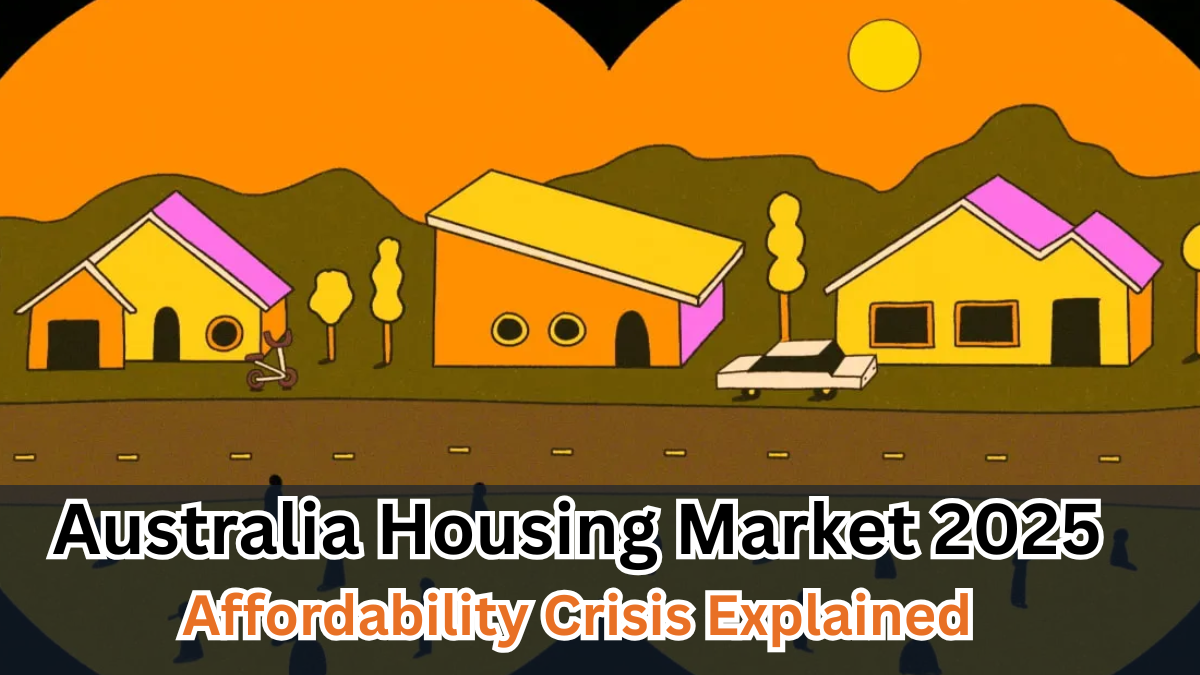The Australia Housing Market 2025 is facing one of its most significant challenges in recent decades: a growing affordability crisis. With housing prices continuing to rise and mortgage rates fluctuating, prospective homeowners are finding it increasingly difficult to enter the property market. This article breaks down the current trends, causes, and implications for both buyers and investors.

Current Trends in the Australia Housing Market 2025
The real estate landscape in Australia has been shifting dramatically. Key trends shaping the Real Estate Australia sector include:
-
Rising Housing Prices 2025: Major cities like Sydney and Melbourne continue to see property values soar, with some suburbs experiencing annual growth rates of 10% or more.
-
High Mortgage Rates Australia: The Reserve Bank of Australia has increased interest rates to combat inflation, directly impacting mortgage repayments.
-
Shift in Buyer Preferences: Growing demand for suburban homes and regional areas as remote work becomes mainstream.
-
Rental Market Pressures: Increased demand for rental properties is pushing rents higher, affecting affordability for many households.
Factors Driving the Affordability Crisis
Several factors contribute to the ongoing housing affordability issues:
-
Limited Housing Supply: Construction has not kept pace with population growth, especially in major urban centers.
-
High Demand from Investors: Investment purchases continue to drive prices up, particularly in sought-after neighborhoods.
-
Inflation and Economic Pressures: Rising costs of living reduce household savings, making homeownership less attainable.
-
Mortgage Rate Volatility: Fluctuating Mortgage Rates Australia can deter first-time buyers from entering the market.
Regional vs Urban Housing Prices 2025
| Location | Median House Price 2025 | Year-on-Year Growth | Key Observation |
|---|---|---|---|
| Sydney | AUD 1,200,000 | 8% | Prices remain among the highest in Australia |
| Melbourne | AUD 1,050,000 | 7% | Moderate growth compared to Sydney |
| Brisbane | AUD 850,000 | 10% | Popular for migration due to affordability |
| Regional NSW | AUD 650,000 | 9% | Rising interest due to remote work trends |
| Regional VIC | AUD 620,000 | 8% | Increasing demand from first-time buyers |
Implications for Buyers and Investors
Understanding these trends is critical whether you’re a first-time homebuyer or a property investor:
-
For Buyers: Be prepared for higher initial costs and fluctuating mortgage repayments. Consider regional areas for better affordability.
-
For Investors: Rental yields may improve in suburban and regional areas, but capital gains may be slower than in metro hubs.
-
Financial Planning: Fixed-rate mortgages could provide stability amid changing Mortgage Rates Australia.
Tips to Navigate the Australia Housing Market 2025
-
Research Regional Opportunities: Cities like Brisbane, Hobart, and Adelaide offer more affordable options.
-
Monitor Mortgage Trends: Keep track of rate adjustments and consult with financial advisors for optimal mortgage plans.
-
Leverage First-Time Buyer Schemes: Government initiatives can help reduce entry costs.
-
Consider Long-Term Value: Focus on areas with strong employment growth and infrastructure development.
FAQs About the Australia Housing Market 2025
Q1: What is driving housing prices in Australia in 2025?
A1: Housing prices in Australia are driven by limited supply, high investor demand, and rising construction costs. Urban centers like Sydney and Melbourne see the highest increases.
Q2: How are mortgage rates affecting buyers in 2025?
A2: Fluctuating Mortgage Rates Australia have increased monthly repayments, making affordability a challenge for first-time buyers. Fixed-rate options may provide some stability.
Q3: Are regional areas better for affordable housing in 2025?
A3: Yes, regional areas like Regional NSW and Victoria offer lower prices while still providing strong long-term growth potential.
Q4: What should investors consider in the current real estate market?
A4: Investors should focus on rental yields, population growth in regional areas, and government incentives while monitoring housing prices and mortgage rate trends.
Click here to learn more